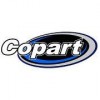Junior Software Developer
300+ Junior Software Developer Interview Questions and Answers
Asked in Atharva Infotech

Q. What is Object-Oriented Programming (OOP), and can you explain each of its core principles?
OOP is a programming paradigm based on objects that encapsulate data and behavior, promoting code reusability and organization.
Encapsulation: Bundling data and methods that operate on the data within one unit (e.g., a class). Example: A 'Car' class with properties like 'color' and methods like 'drive()'.
Abstraction: Hiding complex implementation details and showing only essential features. Example: A 'Payment' interface that defines methods like 'processPayment()' without rev...read more

Asked in Atidan Technologies

Q. Explain OOP concepts in detail, including inheritance, polymorphism, interfaces, and abstract classes.
OOPs is a programming paradigm based on the concept of objects, with features like inheritance, polymorphism, interfaces, and abstract classes.
Inheritance allows a class to inherit properties and behavior from another class. For example, a 'Car' class can inherit from a 'Vehicle' class.
Polymorphism allows objects of different classes to be treated as objects of a common superclass. For example, a 'Shape' superclass can have subclasses like 'Circle' and 'Square'.
Interfaces def...read more

Asked in Infosys

Q. What is inheritance, polymer, oop, pop, overloading, different types of oops concept
Inheritance is a concept in object-oriented programming where a class inherits properties and behaviors from another class.
Inheritance allows for code reusability and promotes a hierarchical relationship between classes.
Example: Class B inherits from Class A, gaining access to its attributes and methods.
Polymorphism allows objects of different classes to be treated as objects of a common superclass.
Example: A method that can take an object of a parent class as an argument can...read more

Asked in Zeel Infotech

Q. What are the different types of keys used in a database?
Database keys are essential for identifying and establishing relationships between records in a database.
Primary Key: A unique identifier for a record in a table, e.g., 'user_id' in a 'users' table.
Foreign Key: A field that links to the primary key of another table, e.g., 'user_id' in an 'orders' table referencing 'users'.
Composite Key: A combination of two or more columns to uniquely identify a record, e.g., 'order_id' and 'product_id' together in an 'order_items' table.
Uniq...read more
Asked in Cattain International

Q. If you had the power to change something in the IT sector, what would it be?
I would enhance collaboration and inclusivity in the IT sector to foster innovation and diverse perspectives.
Promote open-source projects to encourage collaboration across different backgrounds, like Mozilla or Linux.
Implement mentorship programs for underrepresented groups, similar to Google's Code Next initiative.
Encourage remote work policies to attract talent from diverse geographical locations, as seen with companies like GitLab.
Increase funding for tech education in und...read more

Asked in MoreYeahs

Q. What do you know about the software development life cycle?
Software development life-cycle is a process used to design, develop, test, and deploy software applications.
SDLC consists of several phases such as planning, analysis, design, implementation, testing, and maintenance.
Each phase has its own set of activities and deliverables to ensure the successful completion of the project.
SDLC models include Waterfall, Agile, Scrum, and DevOps, each with its own approach to software development.
The goal of SDLC is to produce high-quality s...read more
Junior Software Developer Jobs




Asked in Anthology

Q. What do you know about client-side validation?
Client-side validation is the process of validating user input on the client-side before submitting it to the server.
It is performed using JavaScript or HTML5 attributes.
It helps to reduce server load and improve user experience.
It can be easily bypassed, so server-side validation is also necessary.
Examples include checking for required fields, email format, and password strength.
Asked in WAB IT Software

Q. What is difference between qa and qc , test scanarios
QA focuses on preventing defects, while QC focuses on identifying defects. Test scenarios are specific conditions to test the functionality of a software.
QA (Quality Assurance) is the process of ensuring quality in the software development process, while QC (Quality Control) is the process of identifying defects in the final product.
QA involves processes and activities that prevent defects from occurring, such as code reviews, requirement analysis, and process audits.
QC invol...read more
Share interview questions and help millions of jobseekers 🌟


Asked in Copart

Q. What is the method to count the number of non-repeating characters in a string using Java?
To count non-repeating characters in a string, we can use a frequency map to track occurrences and then filter unique ones.
Use a HashMap: Create a HashMap to store the frequency of each character in the string. For example, for 'hello', the map would be {h=1, e=1, l=2, o=1}.
Iterate through the string: Loop through the string to populate the HashMap with character counts.
Count non-repeating characters: After populating the map, iterate through it to count characters that appea...read more

Asked in Moris Media

Q. How do you approach problem solving in software development?
I approach problem solving in software development by breaking down the problem, researching, and testing solutions.
Break down the problem into smaller, manageable tasks
Research and gather information about the problem domain
Brainstorm and evaluate potential solutions
Implement and test the chosen solution
Iterate and refine the solution based on feedback

Asked in Grapelime Infotech

Q. What is Angular Modules, Explain data Binding and Its types
Angular Modules are containers for a group of related components, directives, and services. Data binding is a way to synchronize data between the component and the view.
Angular Modules help organize an application into cohesive blocks of functionality.
Data binding in Angular allows the synchronization of data between the component and the view.
Types of data binding in Angular are one-way binding ({{}}), two-way binding ([()]), and event binding (()).

Asked in UPNET

Q. How can we redirect to a different page in MVC?
In MVC, we can redirect to a different page using the RedirectToAction method.
Use the RedirectToAction method in the controller action method
Pass the action name and controller name as parameters to the method
Optionally, pass route values as a parameter to the method
Example: return RedirectToAction("Index", "Home");

Asked in Paramount Health Services Tpa

Q. What is API and what are its type
API stands for Application Programming Interface. It defines the methods and data formats that applications can use to communicate with each other.
APIs can be classified into different types such as RESTful APIs, SOAP APIs, and GraphQL APIs.
RESTful APIs use standard HTTP methods like GET, POST, PUT, DELETE to perform operations on resources.
SOAP APIs use XML-based messaging protocol for communication between applications.
GraphQL APIs allow clients to request only the data the...read more

Asked in Paramount Health Services Tpa

Q. What is OOP? Explain in detail.
Object-oriented programming (OOP) is a programming paradigm based on the concept of objects, which can contain data in the form of fields and code in the form of procedures.
OOP focuses on creating objects that interact with each other to solve problems
It involves concepts like classes, objects, inheritance, polymorphism, and encapsulation
Example: In a banking system, you can have classes like Account, Customer, and Transaction with their respective objects

Asked in Paramount Health Services Tpa

Q. What is the difference between a string and a string builder?
String is a sequence of characters, while StringBuilder is a mutable sequence of characters used for manipulating strings efficiently.
String is immutable in Java, meaning once created, it cannot be changed.
StringBuilder is mutable and allows for efficient manipulation of strings.
String concatenation using '+' operator creates a new string object each time, while StringBuilder's append method modifies the existing object.
Use StringBuilder when frequent modifications to strings...read more

Asked in Paramount Health Services Tpa

Q. What validations are used in ASP.NET?
ASP.NET uses various validations like RequiredFieldValidator, RangeValidator, RegularExpressionValidator, etc.
RequiredFieldValidator - Ensures a field is not left blank
RangeValidator - Validates if a value falls within a specified range
RegularExpressionValidator - Validates input based on a specified pattern
Asked in Zensoft Technologies

Q. Tell me the what is abstraction and inheritance and encapsulation, polymorphism. (oops)
Abstraction, inheritance, encapsulation, and polymorphism are the four pillars of object-oriented programming.
Abstraction is the process of hiding complex implementation details and showing only the necessary information to the user.
Inheritance is the mechanism of creating a new class from an existing class, inheriting all the properties and methods of the parent class.
Encapsulation is the practice of keeping the data and methods that operate on the data together in a single ...read more

Asked in TCS

Q. What is the difference between an interface and an abstract class?
Interface defines only method signatures while abstract class can have method implementations.
Interface cannot have method implementations, only method signatures
Abstract class can have method implementations along with abstract methods
A class can implement multiple interfaces but can only inherit from one abstract class
Interfaces are used to achieve multiple inheritance in Java
Abstract classes can have constructors while interfaces cannot
Asked in Magnatesage Technologies

Q. Can we use multiple catch blocks with one try block?
Yes, multiple catch blocks can be used with one try block to handle different types of exceptions.
Multiple catch blocks can be used to handle different types of exceptions thrown within the try block.
Each catch block can specify a different type of exception to catch and handle.
The catch blocks are evaluated in order, so the first catch block that matches the thrown exception type will be executed.
If no catch block matches the thrown exception type, the exception will propaga...read more
Asked in Fortytwo Labs

Q. Explain the project ? E-R Diagram of project and Database design
The project is a web-based inventory management system for a retail store.
Designed E-R Diagram with entities like Product, Supplier, Customer, Order, and Inventory
Database design includes tables for each entity with appropriate relationships and attributes
Used SQL to create tables, define constraints, and write queries for data retrieval and manipulation

Asked in TCS

Q. What are delays? How to avoid delays?
Delays are interruptions or setbacks in a process. They can be avoided by proper planning and communication.
Identify potential delays and plan for them
Communicate effectively with team members and stakeholders
Use project management tools to track progress and identify issues
Address issues promptly to prevent further delays
Continuously evaluate and improve processes to minimize delays
Asked in Butterfly Technology

Q. Tell me about the projects you have worked on and your role in your last organization.
I worked on various projects focusing on web development and team collaboration in my last role as a Junior Software Developer.
Developed a responsive web application using React and Node.js for a local business, improving their online presence.
Collaborated with a team of developers to implement RESTful APIs, enhancing data retrieval and user experience.
Participated in code reviews and contributed to improving code quality and team efficiency.
Worked on a project that involved ...read more
Asked in DiSGen International

Q. What variables are used in constructors?
Variables used in Constructors
Instance variables
Local variables
Parameters

Asked in Infosys

Q. What are the key concepts of Object-Oriented Programming (OOP)?
Key concepts of OOP include encapsulation, inheritance, polymorphism, and abstraction.
Encapsulation: Bundling data and methods that operate on the data into a single unit (class).
Inheritance: Allowing a class to inherit properties and behavior from another class.
Polymorphism: The ability for objects of different classes to respond to the same method call.
Abstraction: Hiding the complex implementation details and showing only the necessary features to the outside world.

Asked in cloudEQ

Q. How do promises work in JavaScript?
Promises in JavaScript are used to handle asynchronous operations and avoid callback hell.
Promises represent a value that may not be available yet but will be resolved at some point in the future.
They have three states: pending, fulfilled, or rejected.
Promises can be chained using .then() and .catch() methods.
They can also be used with async/await syntax.
Example: new Promise((resolve, reject) => {...}).then(result => {...}).catch(error => {...})

Asked in TCS

Q. What is the difference between method overloading and method overriding?
Method overloading is having multiple methods in the same class with the same name but different parameters, while method overriding is redefining a method in a subclass with the same name and parameters as in the superclass.
Method overloading is resolved at compile time based on the method signature, while method overriding is resolved at runtime based on the object type.
Method overloading is used to provide multiple methods with the same name but different functionality, wh...read more

Asked in Brillio

Q. What is the OOPS concepts? Why are using oops concepts?
OOPS concepts refer to Object-Oriented Programming concepts such as inheritance, encapsulation, polymorphism, and abstraction. They are used to create modular, reusable, and maintainable code.
Inheritance: Allows a class to inherit properties and behavior from another class. Example: Parent class 'Animal' and child class 'Dog'.
Encapsulation: Bundling data and methods that operate on the data into a single unit. Example: Class 'Car' with private variables and public methods.
Pol...read more

Asked in MoreYeahs

Q. How can you hide network data from inspection?
Use encryption to hide network data from inspection.
Implement SSL/TLS to encrypt data transmitted over the network
Use VPNs to create secure tunnels for data transmission
Utilize firewalls to restrict access to network data
Implement secure coding practices to prevent data leakage
Use encryption algorithms like AES to protect sensitive data

Asked in MoreYeahs

Q. How do you check for the JWT in Postman?
To check for JWT in Postman, use the 'Authorization' tab and select 'Bearer Token' type.
In Postman, go to the 'Authorization' tab of your request.
Select 'Bearer Token' from the dropdown menu.
Enter the JWT token in the provided field.
Send the request to authenticate using the JWT.

Asked in LinguaSol

Q. Explain Quick sort , Merge Sort algorithm
Quick sort and Merge sort are popular sorting algorithms used to efficiently sort arrays of elements.
Quick sort: Divide and conquer algorithm, picks a pivot element and partitions the array around the pivot. Recursively sorts subarrays.
Merge sort: Divide and conquer algorithm, divides the array into two halves, recursively sorts the halves, and then merges them back together.
Example: Quick sort - [3, 6, 8, 10, 1, 2, 1], Merge sort - [7, 2, 4, 1, 5, 3]
Interview Questions of Similar Designations
Interview Experiences of Popular Companies





Top Interview Questions for Junior Software Developer Related Skills

Calculate your in-hand salary
Confused about how your in-hand salary is calculated? Enter your annual salary (CTC) and get your in-hand salary


Reviews
Interviews
Salaries
Users










